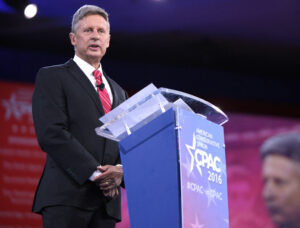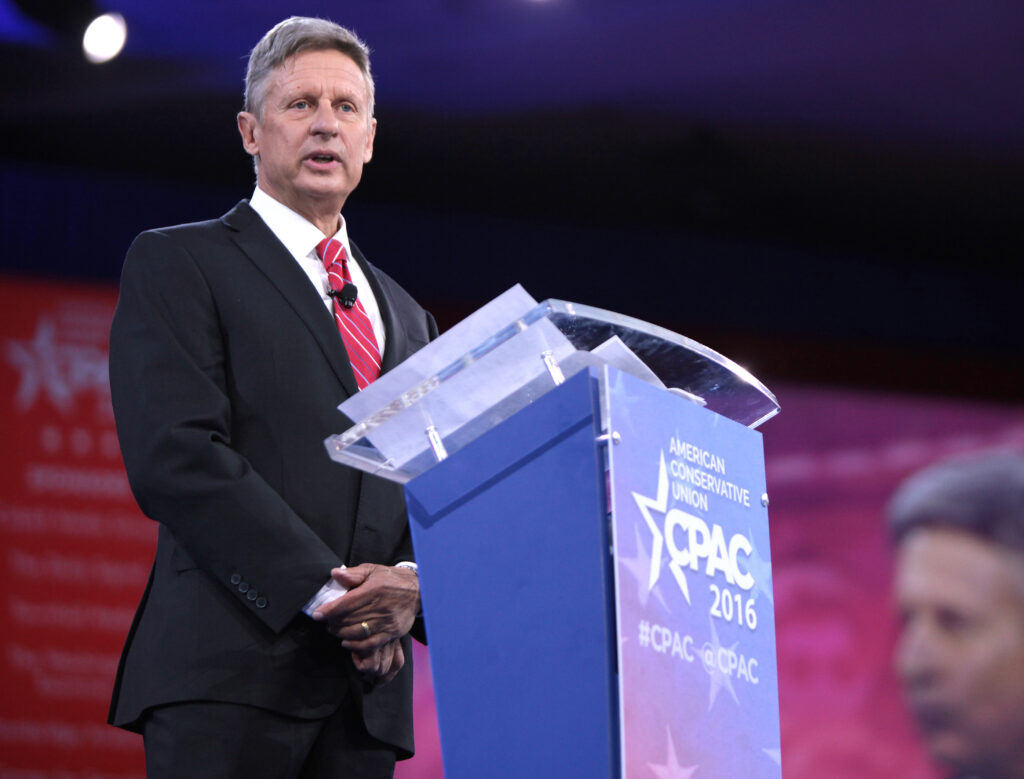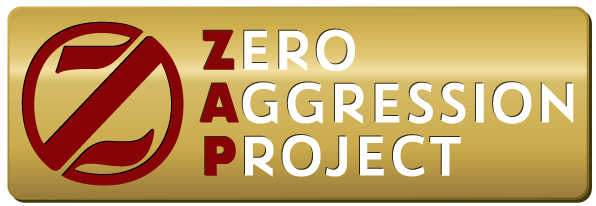
Robert Kennedy and Chase Oliver will be unjustly excluded from the CNN debate
. . . just as every minority party candidate has been since 1996.
This debate exclusion is no accident!
NOT a Podcast
Today, we have an article for you.
The article (below) has never been published online, until now. It was originally part of a proposal package. We called it “The Plan for a Libertarian America.”
I (Jim Babka) was a co-architect of The Plan. A key feature in that plan was the Libertarian Census. At the time, I couldn’t quite raise the funds needed. Good news: The idea has been kept alive, and there’s still a chance it will become a real thing!
Many things have changed since I wrote this piece. As I’ll explain in this week’s episode of Gracearchy, the Commission on Presidential Debates appears to be dead. Good riddance! Still, there are relevant issues in this editorial. Learn and enjoy…
The Insight that could’ve created a Gary Johnson Presidency
Or how to elect a Libertarian to the office of President
By Jim Babka
Gary Johnson’s chief foes in 2016 were the regime media and the CPD (Commission on Presidential Debates), not Hillary and Donald.
The national media controls the American Mind (Agenda Setting Theory) by elevating or suppressing narratives and candidates. It was the media that told interested voters that the Libertarian (1) candidate was irrelevant. And it was the media that funded the polls the CPD used to exclude Johnson from the debates.
Because loyal Gary Johnson supporters had the wrong adversaries in mind, they thought the most important date on the campaign calendar was November 8, Election Day. But…

Photo by Gage Skid more photo of Gary Johnson 2016 presidential campaign. from Wikipedia (Creative Commons).
The real D-day for the Johnson campaign was September 16. That was the day the CPD announced the debate participants. Johnson himself repeatedly acknowledged that everything depended on getting into the debates, which required a 15% showing in five polls. But by 9/16, the regime media had seen to it that Johnson & Weld would not reach the 15% threshold.
Blame it on Aleppo?
Reason writers Brian Doherty and Matt Welch implied that Johnson’s campaign began its polling decline because of Gary’s reply, “What is Aleppo?” That moment is crucial to understand, not because it explains Johnson’s fall but because it helps illustrate that…
The regime media is the main enemy libertarians must defeat.(2)
Contrary to the Aleppo myth, Johnson actually peaked after the September 8th “Aleppo moment.” Johnson’s polling numbers didn’t start to decline until after the CPD announced his exclusion from the debates. But that doesn’t mean the Aleppo moment was unimportant. It warrants a closer look.
The “Aleppo moment” was an ambush. Previous questions in that interview had nothing to do with foreign policy. There was zero context. Then, came this…
BARNICLE: What would you do, if you were elected, about Aleppo?
JOHNSON: About?
BARNICLE: Ahh-lepp-OH.
JOHNSON: And what is a Lepp-O?
Since few people actually watch MSNBC, most people never learned that Gary gave a cogent response once he understood what Barnicle was saying. Most Americans were only shown that brief confused pause. All the mainstream outlets played that snippet ad nauseum, with derogatory commentary. The regime media used it to define Johnson in the public mind. And they never mentioned Gary again without also mentioning Aleppo.
That was no accident. Trump was making two to three worse mistakes, weekly. But his coverage didn’t diminish because of it. Instead, the mainstream media constantly invited Trump’s surrogates on to explain their candidate’s foibles. Trump’s supporters were empowered by these explanations.
Johnson spokesmen didn’t have a place at the same table.
Still, as bad as the Aleppo moment was, Johnson didn’t decline in the polls because of it!
J. Wilson reported the following information six days after the Aleppo interview…
“In the two most recent polls from NBC and IBD/TIPP Gary Johnson was at twelve percent… the Commission on Presidential Debates is only counting five polls… [where] Gary Johnson is averaging 9.2% currently.”
By September 15, Johnson was at 9.4% in the polling (3) average. Overall, he was rising, not falling, despite the Aleppo ambush.
But the next day, the CPD (jointly owned by the Democrats and Republicans) announced that Johnson/Weld didn’t qualify for the debates. Only then did the Johnson/Weld polling numbers start to recede.
This made Johnson’s campaign like every previous Libertarian presidential campaign.
All LP candidates see their poll numbers plummet after the debate roster is announced. I worked for Harry Browne in 2000, and I watched his numbers halve from September to Election Day. The same thing happened to Johnson in 2012 and 2016. It’s easy to see why.
In a winner-takes-all contest, where each person has only one vote, it seems rational to focus on the candidates most likely to win, and then vote for the lesser evil.
The Libertarian candidate can’t be a part of that calculus if he’s got little or no advertising and is denied daily media coverage. Without that exposure, he probably won’t be in the debate either. The flirtation with outside candidates stops when the debate participants are set.
Ross Perot got daily media coverage and was in the debate in 1992. Perot went from polling slightly below where Johnson’s level was on the day CPD made their announcement, to nearly 20% on Election Day. Daily media coverage and the presidential debates are that big a deal!
Johnson knew about Perot’s results and what they meant. He even joked with an MSNBC reporter that it didn’t matter how well he debated, his numbers would climb if he was included or fall if he was excluded.
The Debate Commission
Agenda Setting Theory is not a conspiracy theory. It’s a well-tested reality. As we explained in a Zero Aggression Project Mental Lever…
Virtually the only issues people are passionate enough to follow or discuss are chosen by the partisan, mainstream media.
The degree of public interest in an issue is proportional to the coverage it receives. The importance of a policy matter simply doesn’t matter when compared to the level and type of coverage it enjoys.
When the media engages in Agenda Setting, the range of debate narrows. That signals the public that outside ideas aren’t worth considering.
The media pays for opinion polls and then reports the results. These polls exclude the Libertarian candidate. The media then uses this as an excuse to deny coverage. This retards the Libertarian’s polling standing which gives the CPD a reason to exclude him from the debates. The public then concludes that the Libertarian cannot possibly defeat the candidate they fear the most, and support for the LP candidate declines as Election Day nears.
What’s the Lesson?
If Libertarians wish to succeed, they must devise and execute a plan to achieve the following objectives…
- Get daily coverage, like the Democrats and Republicans enjoy.
- Make sure their candidate is included in all the major polls, especially those used by the CPD.
- Put the CPD under intense scrutiny, perhaps even compelling it to modify its inclusion standards.
- Do anything additional that’s needed to meet the CPD criteria
Had these things been prepared for in 2016, it’s possible that Johnson-Weld could have pulled off an upset victory, given how high the Clinton/Trump negatives were. Remember, Perot was in a position to do something similar back in 1992. On the day he dropped out of the race, Perot had an electoral majority in the polls. He could not regain that level when he rejoined the race. But he did benefit from being included in the debates and daily media coverage, as we showed above.
Because of our non-profit, non-partisan, and voluntaryist stance, we have to amend the ending of this article. But we can share a couple of the points we made at the end.
- 132 million people voted in 2016 (with 66 million electing Trump)
- There are 12 different studies suggesting that 30-60 million Americans either self-identify or hold libertarian views.
- Many people might have chosen Johnson if he had received daily media attention, and/or been included in the presidential debates.
—-
Jim Babka is the co-creator of the Zero Aggression Project, and the President of Downsize DC. His career included various Libertarian Party and campaign positions. He co-authored “The Plan for a Libertarian America” with Perry Willis in 2018.
The views and opinions expressed here are entirely the personal opinions of the author and not necessarily those of the board, staff, or supporters of Downsize DC Foundation, the parent of the Zero Aggression Project.
Downsize DC Foundation is a non-partisan, non-profit organization that advocates for no parties or candidates.
Footnotes
- Voters feel pressure to support the more “viable” alternative (as if their vote decides the election). Despite this, Johnson still had states where 15% or more were willing to flirt with supporting him (see footnote 3). That demonstrated a hope that the third party candidate would become viable. But it also suggests that a significant percentage of the population are small-government libertarians, in a Nolan Chart sense. ↵
- The Clinton campaign and the DNC, which we now know were intimately connected to the media, figured out that Johnson was siphoning younger voters away from Hillary. https://tinyurl.com/ClintonHasJohnsonProblem. ↵
- In a September 14, 2016 Facebook post I, Jim Babka, reported Johnson at 15%+ in Alaska, New Mexico, Utah, and Wyoming. 14%+ North Dakota, Nebraska, and South Dakota. 11%+ Idaho, Indiana, Kansas, Minnesota, Montana, New Hampshire, Ohio, and West Virginia. ↵


Never has the word “gaffe” appeared so often in headlines and teasers as when the legacy media reads the press release.
It helps to spot the fascist media when this happens and everyone is parroting the same message, such as during the pandemic.
But this can all be traced back to 1971 and the closing of the gold window. Devaluation of a currency leads to poor economics and crazy excesses and corruption, and after Watergate’s high point, newspapers cut investigative staffs, made their pages smaller, and eventually moved online and consolidated, and all the other downhill moves that comes from cost-cutting. The TV media lost their eyes and ears and have been reading press releases ever since. We must count on citizen journalists and rebel platforms, now.
Author
Parroting! It’s something I try very hard to avoid. Here, many things pass without comment simply because I lack an original or unique take. But I’m noticing that the closer I am to the parrot, the more response I get, even from the astute libertarian audience I’ve attracted over the years. Everyone is more susceptible to “agenda setting” than they realize.